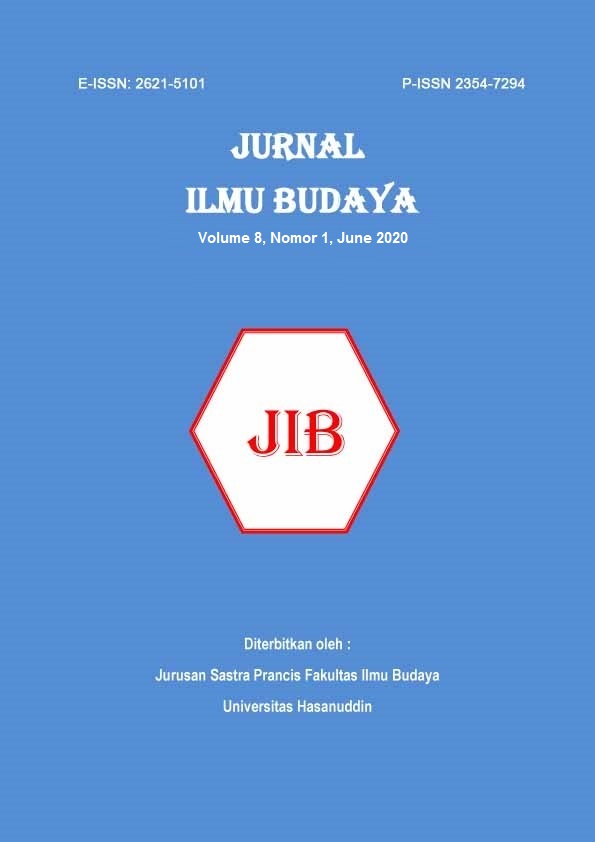EFEKTIVITAS MODEL DIRECT INSTRUCTION DALAM MENINGKATKAN KEMAMPUAN SISWA SMA NEGERI 1 BATAUGA MEMAHAMI NILAI DALAM FOLKLORE WANDIUDIU
DOI:
https://doi.org/10.34050/jib.v8i1.9628Keywords:
direct instruction, student’s ability to understand the value of folkloreAbstract
This study aims (1) to explain the application of the direct instruction model in improving the ability of students at SMS Negeri 1 batauga to understand the value of Wandiudiu’s folklore and (2) explain the effectivennes of the direct instruction model in improving the ability of students of SMA Negeri 1 Batauga to understand the value of Wandiudiu’s folklore. The type of research used is the type of classroom action research or commonly known as PTK (classroom action research). This class action research applies several cycles in it’s implementation. The results showed that there was an increase in student learning process. Learning out comes in the control class show differences. However, this difference does not indicate a significant increase in learning outcomes. Cycle I reaches an average value of 70,61 and cycle II reaches an average value of 72,04. The results of both cycles are only in the sufficient category. Learning outcomes in the experimental class showed significant differences. Cycle I reached an average value of 78, 87 and was in the sufficient category, while cycle II achieved an average value of 85,17 and was in the goog category. The improvement of learning outcomes shows taht the effective direct instruction model is used to improve the ability of students of SMA Negeri 1 Batauga to understand the values in Wandiudiu’s folklore.
References
Amintoko, Gunanto. 2017. Model Pembelajaran Direct Instruction dalam Meningkatkan Pemahaman Konsep dan Hasil Belajar Definisi Limit bagi Mahasiswa. Journal Unsika, 1 (1), 1 – 12.
Amri, Sofan. 2013. Pengembangan dan Model Pembelajaran dalam Kurikulum 2013. Jakarta: Prestasi Pustakarya.
Arafah, Burhanuddin, Hasyim, Muhammad. 2019. Linguistic functions of emoji in social media communication. Opcion. 25 (24), 558-574.
Arafah, Burhanuddin and Hasyim, Muhammad. 2019. The Language of Emoji in Social Media. in The Second Annual International Conference on Language and Literature, KnE Social Sciences, pages 494–504.
Bahar, Andi Kaharuddin, Latif, Ismail. 2019. Society-Based English Community (SOBAT): EFL Learners’ Strategy in Learning and Practicing English Outside The Walls. Jurnal Ilmu Budaya. 7 (2), 255-265.
Budiningsih, Aris. 2012. Belajar dan Pembelajaran. Jakarta: Rineka Cipta.
Danandjaja, James. 2007. Folklor Indonesia, Ilmu Gosip, Dongeg, dan lain-lain. Jakarta: Grafiti.
Djamarah, Bahri, Syaiful. 1981. Prestasi Belajar dan Kompetensi Guru. Surabaya: Usaha Nasioal.
Joyce, Bruce,dkk. 2009. Models Of Teaching. Yogjakarta: Pustaka pelajar.
Kemmis, S. & Mc Taggart, R. 1988. The Action Research Planner. Australia: Deakin University Press.
Neisser, Uris. 1976. Cognition and Reality: Principles and Implication of Cognitive Psycology. San Fransisco: Freman and Company.
Nur, M dan Kardi, S. 2000 Pengajaran Langsung. Pusat Sains dan Matematika. Sekolah Program Pasca Sarjana. UNESA.
Santrock, John W. 2017. Educational Psychology. New York: McGraw-Hill Companies.
Sudjana, Nana. 2004. Dasar-Dasar Proses Belajar Mengajar. Bandung: Sinar Baru Algesindo.
Sugihartono, dkk. 2007. Psikologi Pendidikan. Yogyakarta: UNY Press
Suprijono, Agus. 2012. Cooperative Learning. Jogjakarta: Pustaka Belajar.
Suyitno. 1986. Sastra, Tata Nilai, dan Eksegesis. Yogyakarta: Hanindita.
Trianto. 2010. Mendesain Model Pembelajaran Inovatif-Progresif. Jakarta: Kencana Prenada Media group.
Wellek, Rene & Austin Warren. 2014. Teori Kesusasteraan (terjemahan). Jakarta: Gramedia Pustaka Utama.
Downloads
Published
Issue
Section
License
Copyright (c) 2020 JURNAL ILMU BUDAYA

This work is licensed under a Creative Commons Attribution-NonCommercial 4.0 International License.


